Choosing a quartz backsplash for your kitchen is a great idea. But there are many things to consider, like color, thickness, etc. This guide will discuss everything you need to know about quartz backsplash thickness.
Choosing the right quartz backsplash thickness may seem like an easy decision. But you may make a mistake if you don’t consider the kitchen space, backsplash cost, and location.
Quartz backsplashes come in different thickness levels like any other solid slab backsplash. As you’ll expect, the higher thickness means you’ll enjoy the most advantages of the quartz backsplash.
Let’s discuss everything involved with quartz backsplash thickness.
JUMP TO: Types of Quartz Backsplash | Byung Guide For Quartz Backsplash | Pros and Cons Of a Quartz Backsplash |
- The average thickness of quartz backsplashes is between 1cm to 3cm.
- A thick quartz backsplash may make your kitchen seem more minor.
- Thin and thick quartz backsplashes are durable and robust.
- Thick Quartz backsplashes are more expensive than thin ones.
Types of Quartz Backsplash Based on Thickness
Quartz slab backsplashes are probably the best because of their durability and low maintenance. Another advantage is the freedom it gives you to customize your backsplash.
That means you can have your quartz backsplash in any color or thickness.
Most times, thickness is usually used for a quartz countertop. But based on thickness, there are three types of quartz slab backsplashes:
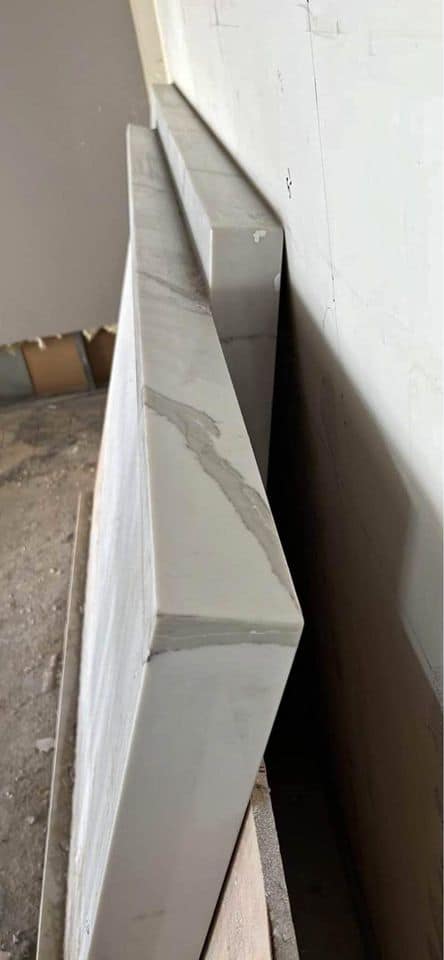
Ultra Thin Quartz Backsplash
This backsplash type is the one with the slimmest thickness. It still performs all the functions of the quartz backsplashes. But its thickness is usually between 1-1.2 cm.
This slim look makes it seem much better – like a random wall. However, it also comes with many cons.
Thin Quartz Backsplash
Thin quartz gives a more solid surface than ultra-thin thickness. The thickness measurements are usually around 2cm.
Like the ultra-thin quartz backsplash, this doesn’t affect your kitchen size and still looks great.
Thick Quartz Backsplash
Usually, this is the most common type of quartz slab. It has a thickness level of 3cm and may not be the best option if you have a small kitchen design.
But with this thick quartz backsplash, you’ll get all the advantages that quartz offers. It’s familiar and one of the main reasons to choose quartz.
What is The Ideal Thickness for A Backsplash
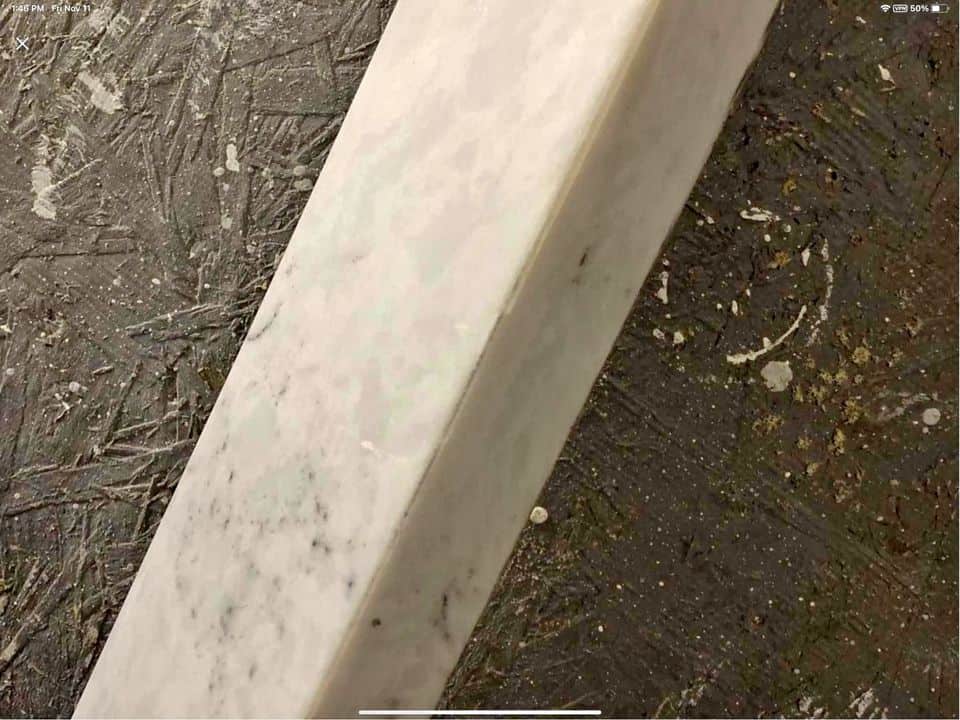
Being the second most abundant mineral on earth, quartz is a great backsplash choice among other materials. It performs better than granite or marble as a countertop or a full-height backsplash. Durability is one top reason that makes quartz good.
However, what should the thickness be for your kitchen quartz backsplash? Of course, you want the most beautiful backsplash, but does the thickness matter?
Before determining how thick your backsplash should be, you need to consider some factors. The material used is an essential factor that affects thickness. Using natural stones or tile backsplash may sometimes have an average thickness level.
But in most cases, the average kitchen backsplash thickness ranges from 3/16 inches to ¼ inches for light materials. That will include tiles and glass, amongst others.
However, the case is different with a stone slab. A natural stone slab’s average kitchen backsplash thickness usually ranges from ⅜ inches to 0.5 inches. The thickness ensures that a stone slab has enough protection for the wall.
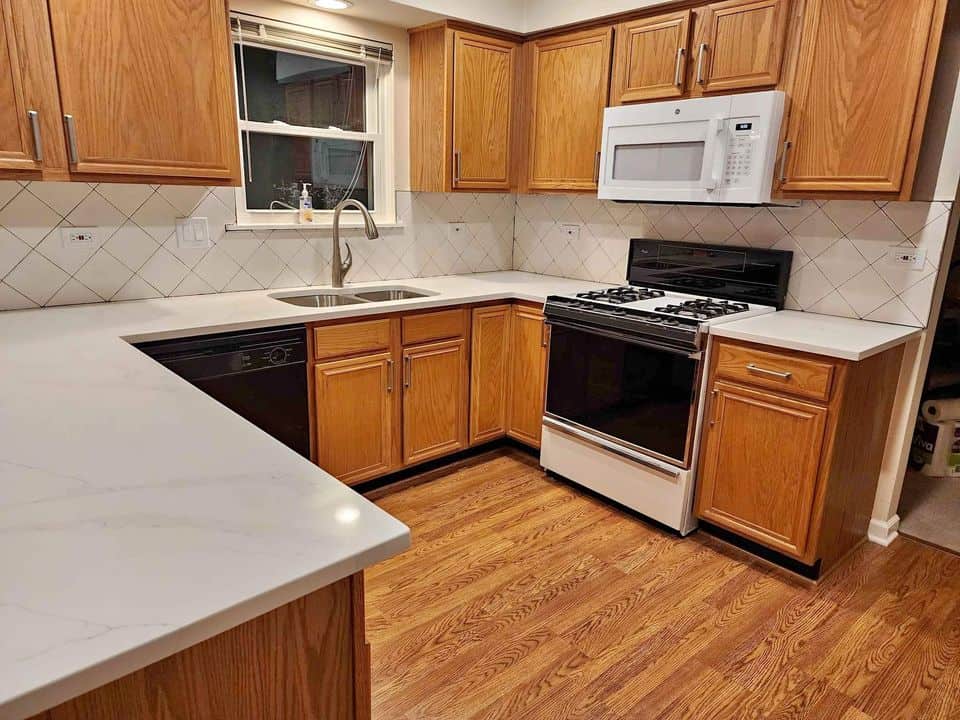
What Is The Best Thickness for A Quartz Backsplash
Quartz is a natural stone, but the natural stone mixes with specific compounds to form the backsplash. However, the quartz slab backsplash obeys the general rules of natural stone slabs.
You can keep the standard backsplash sizes within the range of ⅜ and ½ inches. From experience, I can say that the solid slab’s thickness can protect your wall paneling, amongst others. At the same time, it’s thin enough to install easily without affecting such a beautiful look.
However, you can always make some tweaks based on your kitchen design. For instance, if your kitchen has black cabinets all around, you need a thinner material for the quartz backsplash. That’s because heat from the stovetop and countertops will affect the walls, and quartz backsplash isn’t exactly heat resistant.
On the other hand, if you have white kitchen cabinets and white appliances, you can go for a thick backsplash. That way, you’ll protect the white kitchen cabinets from dirt and water stains.
If you’re having a kitchen remodel, it is better to speak to an expert to be sure of the right decision. The expert knows just the suitable cabinets, whether upper cabinets or white cabinets, for the kitchen remodel. The expert can also guide you with syncing the backsplash with kitchen quartz countertops.
Factors to Consider when Choosing Quartz Backsplash
One thing to note about quartz backsplashes is regardless of the thickness; they will still perform most of their duties. That means you’ll also be getting the features of the timeless material, regardless of thickness.
Therefore, there’s no right thickness for a quartz backsplash. There’s an average range of 1cm and 3cm, but it depends on your situation.
Like the examples with black and white cabinets, the thin backsplash may be better for your kitchen design.
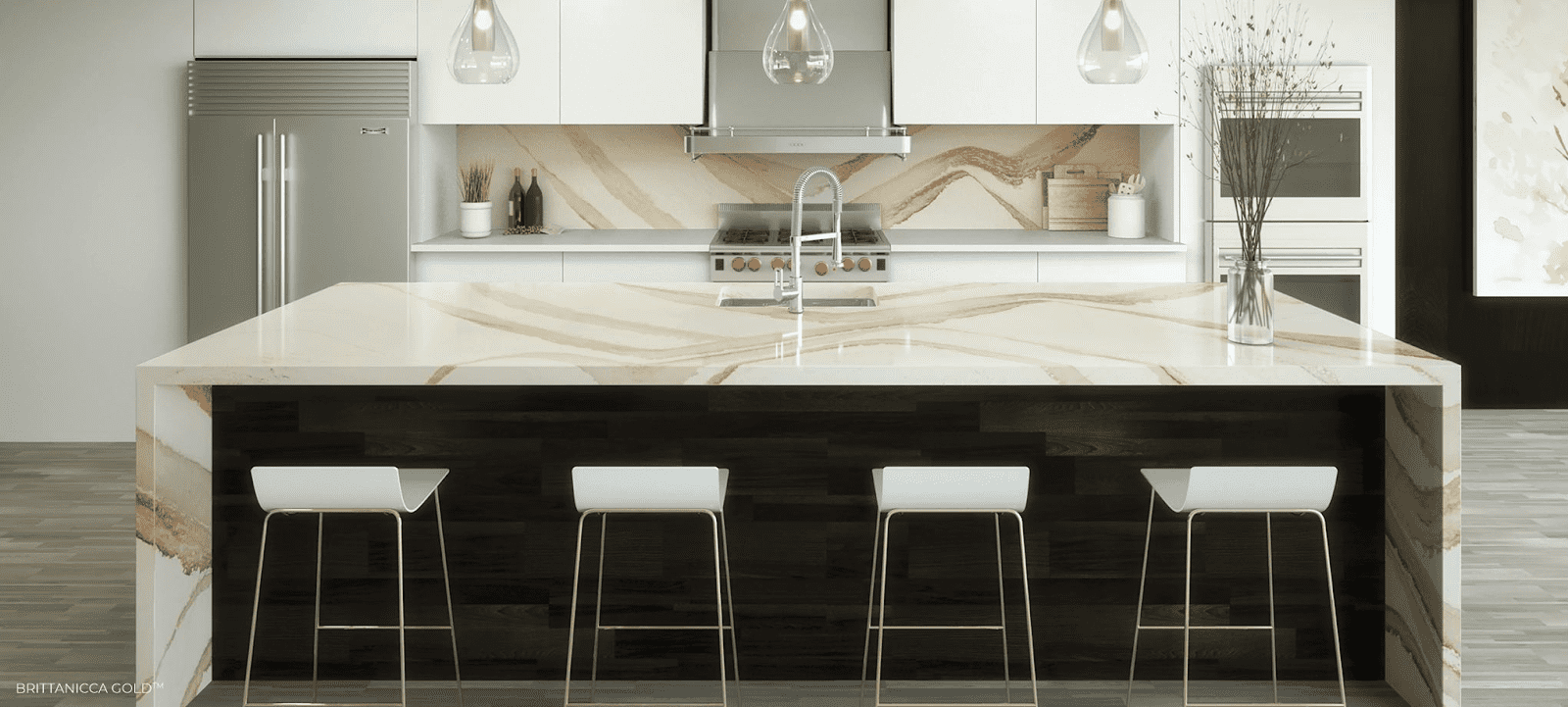
Source: cambriausa.com
Let’s look at some factors to consider when choosing quartz backsplash thickness.
Also Read: Is It Possible to Put a Coffee Machine on A Quartz Counter? Know the Answer
Kitchen Size
The first thing to consider is the kitchen size. A quartz backsplash kitchen addition is a great one. But if the backsplash is too thick, it will affect the kitchen’s perceived size.
It’s not like the backsplash is exactly changing your kitchen size. But since it’s usually below the wall cabinets, it would seem like the kitchen wall is closest to you.
If you use individual tile backsplash in a small kitchen, they will retain the perceived size. But you will require sealing the grout lines to deal with moisture from upper or gray cabinets.
Instead, a better option is to choose a solid quartz slab with little thickness. You’ll save money, retain your kitchen’s size and get the benefits of quartz as a backsplash.
Material Type
Quartz is a natural stone that is a timeless material. Quartz backsplashes can last a lifetime with proper care.
However, understanding the material used in making the backsplash is necessary before choosing the thickness.
For instance, a natural stone slab will give you a strong and solid slab. But while you have a solid surface, you won’t enjoy the benefits of a quartz slab.
A quartz slab has a non-porous feature that resists liquid, so your walls and white shaker cabinets are safe from moisture attacks.
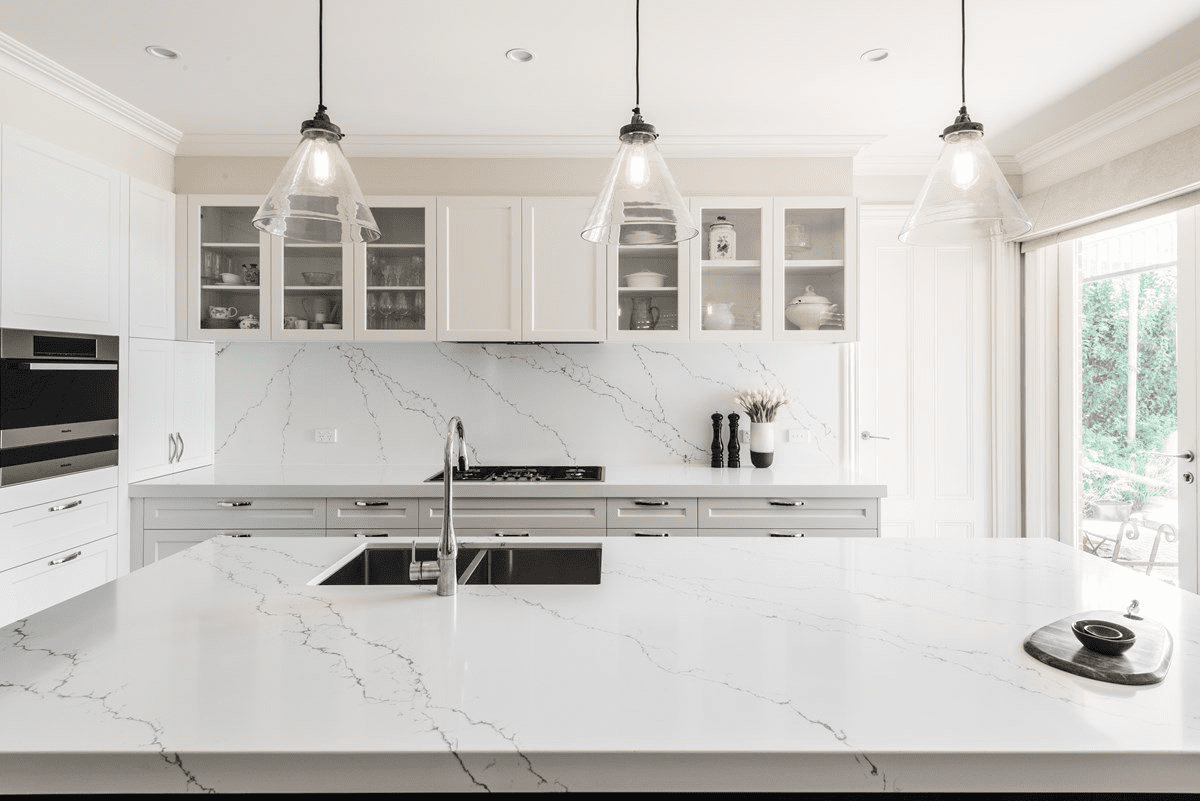
Source: marblegraniteworld.com
Strength and Durability
As I mentioned, a quartz slab backsplash’s thickness or thin nature doesn’t affect its durability. In the same way, quartz countertops are better than marble countertops, tile, or other materials, but it remains the same.
However, the thickness affects the strength of the quartz slab backsplash. Originally, quartz had a hardness rating of 7 on Mohr’s scale. But it’ll be easier to break thin quartz than thicker one.
This strength comes from the weight of the quartz backsplash, which may rest on your upper cabinets. However, the strength is enough to carry whatever weight.
Cost
Quartz costs anything between $30 to $150 per square foot. The factors affecting the backsplash cost per square foot include color, type, and thickness.
The thicker a quartz slab backsplash is, the more expensive it gets. Now, the quartz backsplash cost and benefits aren’t too far apart.
You can install the thin backsplash if you’re on a tight budget. The backsplash cost for the thin ones is smaller than the thicker ones.
Related Read: Granite Vs. Marble Vs. Quartz Countertops
Aesthetics
Another factor to consider when considering thickness is the design. How do you want your kitchen to look after installing the quartz slab?
Thicker quartz will deliver a solid surface backsplash, while the thinner one will look more simple. However, the thicker one will affect the appearance even more.
For instance, the thick backsplash will make the cabinet look smaller if you have slim gray kitchen cabinets. However, it will also affect the appearance of the gray cabinets if they’re thick, but it will be less apparent.
Advantages and Disadvantages of a Thick Quartz Backsplash
I like to think of a thick backsplash like a granite backsplash with quartz features. The only difference is the granite backsplash is natural and has fewer features.
Let’s look at some advantages and disadvantages of thick quartz backsplashes.
Pros
- Better heat resistance: Quartz isn’t excellent under high heat. But a thick solid surface backsplash will do better at heat resistance.
- Strength: The higher the backsplash thickness, the stronger the item.
- Better sturdiness: There’s only a slight difference between the resistivity of thick and thin backsplashes. However, the thicker option shows more features of the quartz backsplash.
Cons
- Higher costs
- It makes the kitchen design look smaller
- It’s harder to install.
Know More: Granite vs. Quartz Countertops [6 Key Differences]
Conclusion
Choosing the best quartz backsplash thickness range for yourself isn’t always easy. You need to consider factors, including your kitchen size and budget.
One thing to note, however, is there’s not much difference between the regular thin quartz backsplash and the thicker one.
The best way to get the right thickness is to call an expert to help make decisions with you. They know the best thickness choice for a quartz backsplash in relation to your kitchen.

![Granite Vs. Marble Vs. Quartz Countertops [12 Differences+Pros & Cons] Granite Vs. Marble Vs. Quartz Countertops [12 Differences+Pros & Cons]](https://houseadorable.com/wp-content/uploads/2022/03/quartz-marble.jpg)
![16 Types of Kitchen Faucets Explained [With Pros + Cons] 16 Types of Kitchen Faucets Explained [With Pros + Cons]](https://houseadorable.com/wp-content/uploads/2023/02/Roca_griferia_cocina_mencia_negro_DEF_900x505_acf_cropped-1@2x-250x250.jpg)
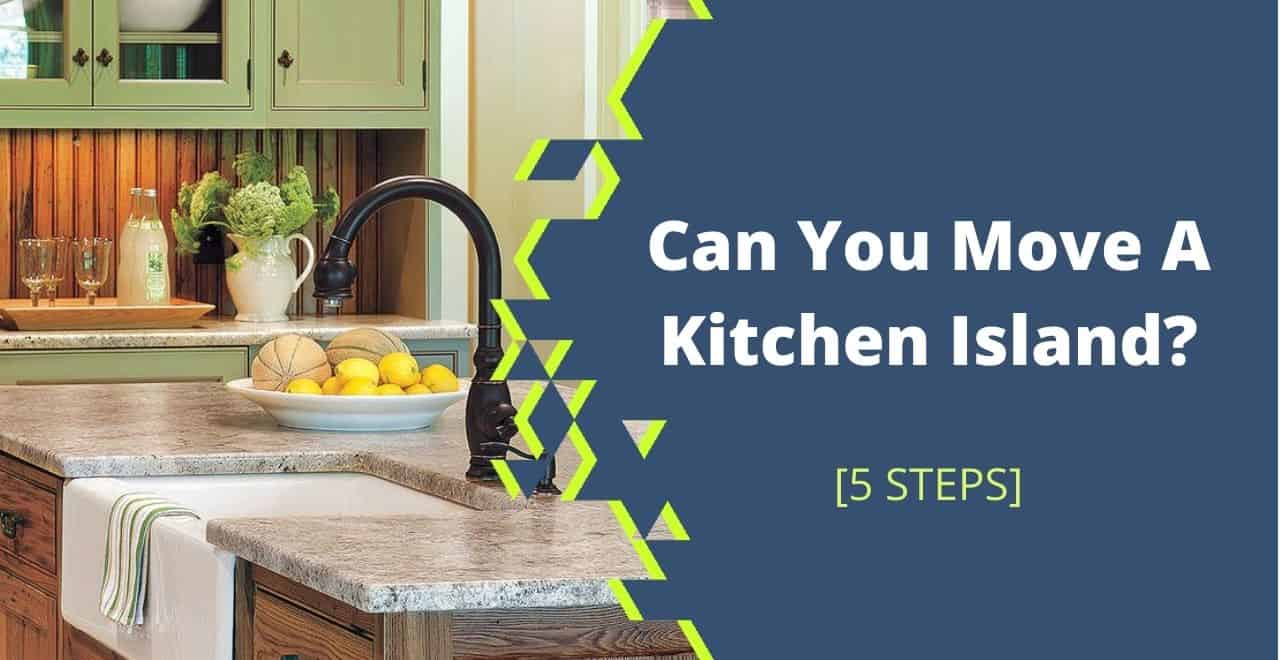
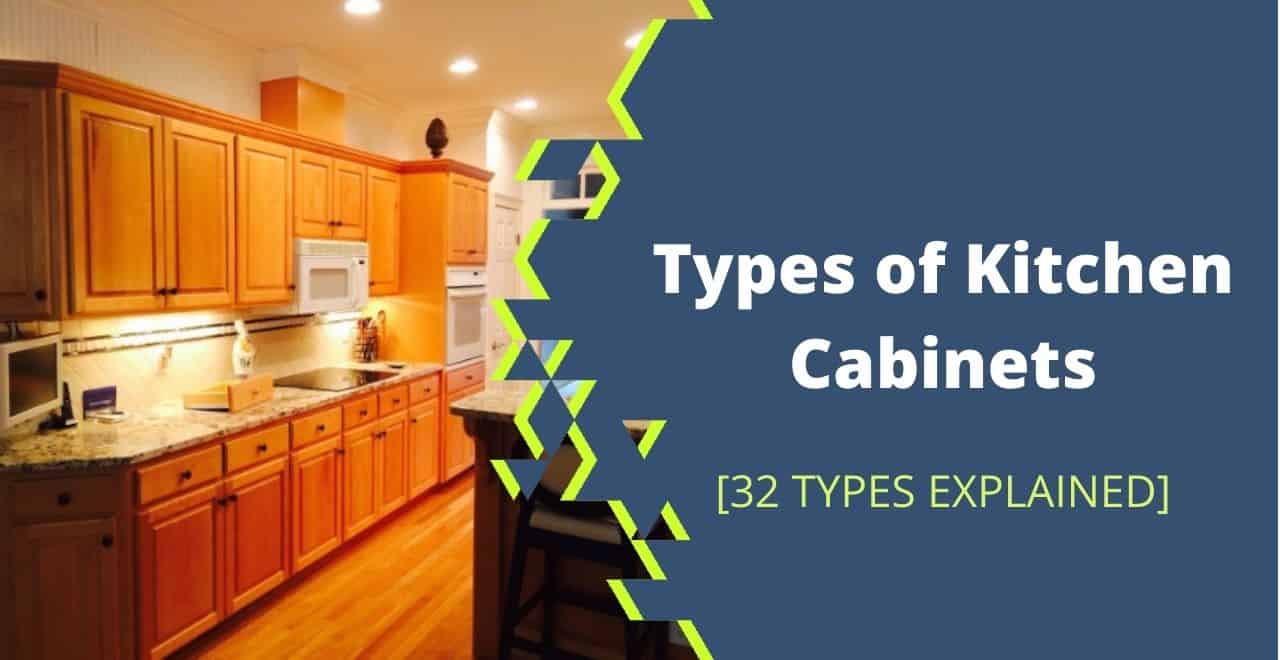
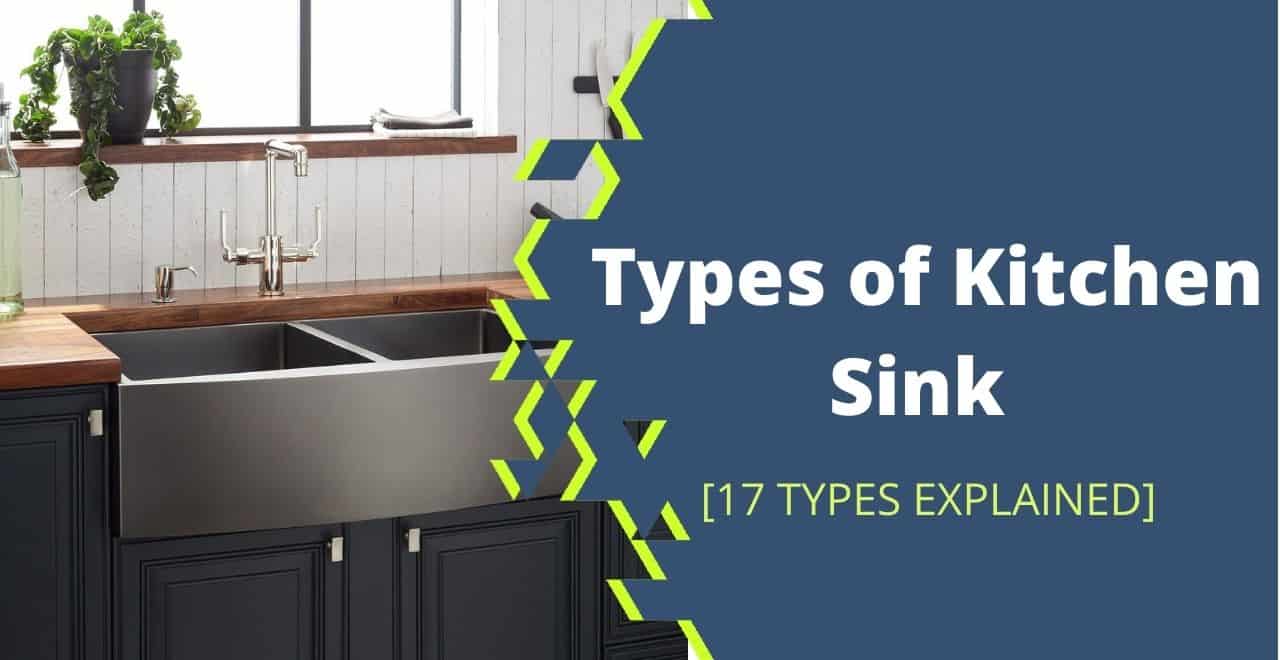
![How Much Does It Cost to Build a Kitchen Island? [Custom Made+DIY] How Much Does It Cost to Build a Kitchen Island? [Custom Made+DIY]](https://houseadorable.com/wp-content/uploads/2022/03/cost-of-kitchen-island.jpg)
![Centerset Vs. Widespread Faucets [8 Differences Explained] Centerset Vs. Widespread Faucets [8 Differences Explained]](https://houseadorable.com/wp-content/uploads/2023/03/1_332369605_6500081363358836_8480186754416832788_n-250x250.jpg)